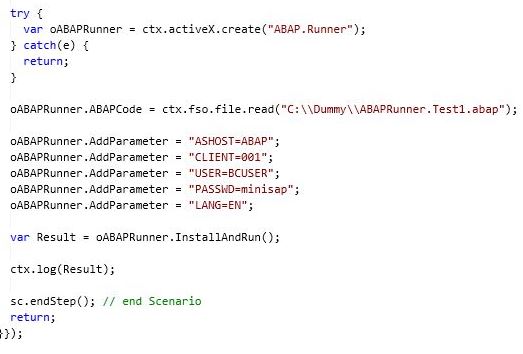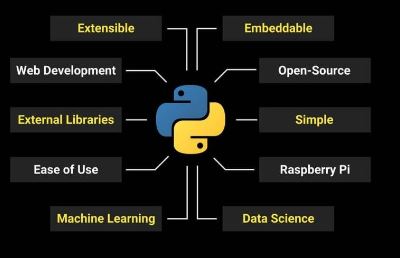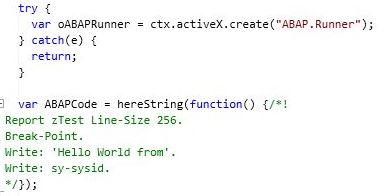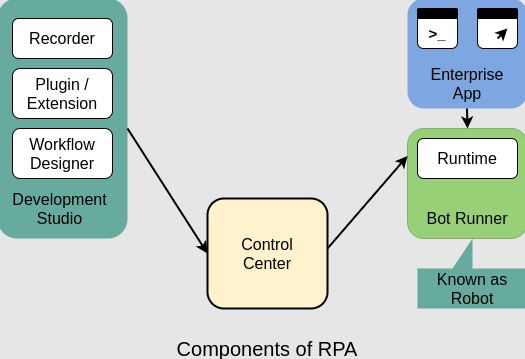
Robotic Process Automation with Python Tutorial | Learn to Write Python Script Command in RPA
Last updated on 12th Aug 2022, Blog, Tutorials
What is RPA with a Python
One of the primary aims of robotic process automation is to automate labour that is repetitive in nature. One of these processes is the daily download of datasets, which is required in order to maintain an up-to-date version of the data that is used by specified scripts.We are going to make the assumption that you already have some prior knowledge of robotic process automation (RPA), which is an umbrella term for all of the technologies, products, and procedures involved in the automation of work processes. In such case, you might want to have a look at our earlier post which provided an introduction to robotic process automation.
Why is Python Necessary for Robotic Process Automation?
- The functionality of drag-and-drop is included in the majority of RPA platforms; however, customisation is restricted. Even when the developers are able to make changes to the robots, the robots are unable to keep their stability and frequently break apart.
- Python is a programming language that can be used to build specialised robots that perform exactly the tasks that the user specifies.
- You can define them by utilising a streamlined command language that is based on Python. You have the ability to improve the robots whenever necessary by using Python libraries.
- The need for Python in robotic process automation (RPA) is growing as more personnel with Python skills become available and as there are a growing number of possibilities that Python enables when integrated with RPA.
- The next stage in the development of robotic process automation (RPA) is called cognitive RPA, and it enables RPA to collaborate with artificial intelligence.
- It is necessary to have skills in machine learning and programming in order to develop models that are capable of natural language learning in order to implement artificial intelligence.
- For this activity, knowledge of Python is required.
- For more advanced operations, complex analyses, and activities, such as acquiring data through a site scrape and then altering this data to exactly how you’d like to utilise it, most RPA tools require some level of programming skills.
- This is because advanced operations, complex analyses, and activities require more than simple scripting.
- Because the data could be in its raw form, it needs to go through additional processing and analysis before it can be put to any beneficial purpose.
- Computer programming languages such as Python come in helpful in situations such as these because they are able to make use of the numerous libraries that are available to handle the laborious work of data processing.

The Advantages of Using RPA with a Python:
- License When you use Python, there are no associated costs.
- The versatility of a Python-based RPA system is just one of many benefits that come with using such a system. The majority of the leading RPA systems available today offer powerful solutions; however, these solutions come at a price.
- Because the rentals for these RPA licences are simply too expensive, scaling RPA in any company, regardless of its size, is the task that presents the greatest challenge. Python’s licence fee is nil when it comes to robotic process automation (RPA).
- Python makes it possible to simultaneously run many bots.
- RPA is not designed to manage many processes at the same time, both on the same workstation and with the same user.
- When Robotic Process Automation (RPA) is implemented in Python, on the other hand, each bot stands for a separate automated activity, task, or process.
- You can scrape content from multiple websites at the same time. If the web applications in question allow it, you are able to automate numerous of them simultaneously.
Python is the language that is most commonly used in AI and ML:
- RPA is able to handle high-volume, repetitive activities because it makes use of software that is equipped with Artificial Intelligence (AI) and Machine Learning (ML) capabilities.
- Python is by far the most popular choice for usage in AI and machine learning applications.
- Any RPA programme will include a number of inbuilt or third-party AI packages that may be used to infuse intelligence into their bots.
- These packages can be found in the RPA software. However, these packages do not come without a cost.
- However, the expenses and complexities associated with these many AI/ML layers are significantly reduced with Python-based intelligent RPA solutions, allowing adequate space and flexibility for a seamless RPA + AI/ML experience at a fraction of the cost.
- This is made possible by the fact that these solutions are written in Python.
Why to Learn Python?

Python is an absolute must for any student or working professional who aspires to become a brilliant software engineer, and this is especially true for those who work in the field of web development. I shall enumerate some of the most important benefits of becoming proficient in Python:
Python is Interpreted: The interpreter is responsible for interpreting Python when it is being run. There is no requirement for you to compile your software before running it. This works in a manner comparable to PERL and PHP.
Python is an Interactive Language: in order to write your programmes, you may actually sit down at a Python prompt and interact with the interpreter in order to do it.
Python is an object-oriented programming language: Python also supports the Object-Oriented programming style or approach, which encloses computer instructions within objects.
Python is an Excellent Language: for Beginners Python is an excellent language for programmers who are just starting out. It facilitates the development of a wide variety of programmes, ranging from simple text processing to browsers for the World Wide Web to games.
Exactly what does “robotic process automation” entail?
Instead, software robots operating on a physical or virtual machine are the “robots” in robotic process automation.RPA bots can simulate human-computer interactions well enough to complete a large number of routine activities quickly and accurately.If the idea of such an automated system seems, well, boring when contrasted to the robots of Hollywood, that’s on purpose. The ultimate goal of robotic process automation (RPA) is to automate low-level, routine, computer-based operations and processes in the workplace. Tasks like copying and pasting and transferring files between locations come to mind.RPA automates routine tasks that were previously performed by humans; these tasks were often repetitive and time-consuming. That’s another way that RPA claims to improve productivity in businesses.
The demand for RPA specialists presents an opportunity for Python programmers:
1. Participate in the development of open source RPA projects
- Several open source RPA projects were found by our team. By making contributions to them, developers have the opportunity to enhance their reputations in the open source and RPA communities.
- We provided a rundown of the various ways in which Python coders might contribute to the expansion of RPA and profit from its rapid expansion. Feel free to share your thoughts in the comments section below if you can think of more ways Python developers might design RPA solutions.

2. Create modular add-ons for online stores
Python programmers can gain not only recognition in the industry but also financial incentives by creating reusable plugins for various RPA platforms.Although RPA solutions do offer some functionality for creating bots, this feature is quite fundamental. A typical user interface and data manipulation platform will have between three hundred and four hundred available functions. The next step is for customers to visit app stores, where they can choose from tens of thousands of features.Our research into existing RPA marketplaces and RPA case studies led us to identify the following as the most promising places to apply Python libraries in the development of popular RPA plugins:
- Invoice automation is the most prevalent RPA example we came across in our research because document processing is a crucial aspect of most repetitive business operations.
- Therefore, OCR and other cutting-edge technologies for document data extraction as plugins in RPA marketplaces can be useful.
- Developers have the option of working with existing providers or creating their own plugins to monetize in this space.
- After information has been extracted from documents, natural language processing and natural language understanding technologies are required for analysis. SpaCy, Gensim, and NLTK are only a few of Python’s many NLP packages, and they each have more than 4000 github stars between them.
- As pattern recognition paves the way for RPA bots to make decisions and take on more complex tasks, there is a rising interest in integrating machine learning to RPA bots. When it comes to deep learning and machine learning libraries, TensorFlow and PyTorch are at the top of the pack.
- For example, in the realm of image processing, OpenCV and Numpy are two of the most popular libraries; in the realm of web scraping, Scrapy and Selenium are two of the most popular libraries.
3. Participate in the creation of bespoke Python robotic process automation products
You can advance your career in RPA via Python by participating in the development of Python RPA products by joining the development teams of those products. On the other hand, because there aren’t that many proprietary platforms, this presents a chance for only a select few developers. It appears that the majority of the Python-based RPA platforms that we mentioned before are in the process of expanding their teams; hence, it would be interesting to join them.
Python’s many uses and applications:
Python 3.x is the most recent version to be released. As was just discussed, Python is one of the programming languages that is utilised the most on the internet. I’ll only mention a couple of them here:
- Python’s few keywords, straightforward structure, and well-defined syntax all contribute to the language’s ease of learning.
- A comprehensive standard library The majority of Python’s library may be used portably and is compatible with other operating systems, including UNIX, Windows, and Macintosh.
- Python contains support for an interactive mode, which enables interactive testing and debugging of snippets of code. This mode is referred to as the interactive mode.
- Python is portable in the sense that it can be executed on a broad number of hardware platforms and maintains the same interface regardless of the platform it is running on.
- Extendable in the sense that the Python interpreter supports the addition of low-level modules. These modules give programmers the ability to extend or modify their tools in order to make them more effective.
- Databases Python has interfaces to all of the most popular commercial database platforms.
- Programming for Graphical User Interfaces (GUI) Python facilitates the creation of GUI programmes, which may then be converted to a variety of system calls, libraries, and windowing systems.
- These include Macintosh, Windows MFC, and the X Window system that is used by Unix.
- Scalable In comparison to shell programming, Python offers larger programmes superior support and structure for their development.

RPA’s Advantages:
What other advantages does RPA have besides those we have already covered in the areas of finance, customer service, and human resources? DevOps Institute’s Chief Research Analyst Eveline Oehrlich suggests imagining what could be accomplished if your company’s IT department were given back some of their time.
- Oerlich argues that “the productivity promise of RPA is too promising to ignore.
- The state of the art will continue to advance, but it doesn’t mean robots will eliminate human employment.
- In an ideal world, CIOs will be able to put their staff members to use on tasks that are more vital to the success of the company’s digital transformation initiatives, thanks to these automated tools.
- In addition, assure sceptics that RPA may be tried out risk-free on the house thanks to the free trials provided by many service providers.”
The history of robotic process automation with Python:
- The robotic process automation is used in businesses that are not involved with IT. These days, every company has a tedious, draining, and drawn-out duty; hence, robotic process automation (RPA) is essential to eliminate these types of assignments by making the computerization of responsibilities. The operational procedures of the company can be improved rapidly as a result.
- Artificial intelligence was the first step in the process of developing robotic process automation. It was first developed by “Arthur Samuel” in the year 1959. At the time, he was working for IBM in a department that dealt with artificial intelligence. The 1960s saw the birth of a field known as natural language processing, which is essentially the consolidation of computerised reasoning with the collaborations of personal computers and individuals.
- Around the middle of the 1990s, numerous firms began to adopt artificial intelligence, primarily for the purpose of putting together organisations. However, its performance within the financial sector has suddenly deteriorated due to the high costs of its operations and concerns with its performance.
- When this occurred, Natural Language Processing was introduced into the information technology ventures. The primary objective of Natural Language Processing (NLP), which stands for Natural Language Processing, was to improve the accuracy of the personal computer’s comprehension of and interaction with human language. Robotic process automation ought to make use of both machine learning and natural language processing in some form or another.
RPA Component:
- The individual components of RPA have come together to produce a stage that is capable of automating any mundane task. The reusability of the mechanical process inside the frameworks, the ability to work on adjustments, and so on all benefit from robotization of the mechanical process.
- It has narrowed its focus to the business rules despite the fact that there is practically no compelling reason to establish the linkages. The RPA is also useful for the objective application joining, which may be modified without the risk of disrupting existing business procedures.
Are you looking training with Right Jobs?
Contact Us- What does the Yield keyword do and How to use Yield in python ? [ OverView ]
- Go vs Python | Know Their Differences and Which Should You Learn?
- What are the Important Data Structures and Algorithms in Python?
- All You Need To Know About Python List | A Complete Guide For Beginners with Best Practices
- What is Python Programming | A Definitive Guide with Best Practices
Related Articles
Popular Courses
- VM Ware Training
11025 Learners - Microsoft Dynamics Training
12022 Learners - Siebel Training
11141 Learners
- What is Dimension Reduction? | Know the techniques
- Difference between Data Lake vs Data Warehouse: A Complete Guide For Beginners with Best Practices
- What is Dimension Reduction? | Know the techniques
- What does the Yield keyword do and How to use Yield in python ? [ OverView ]
- Agile Sprint Planning | Everything You Need to Know
